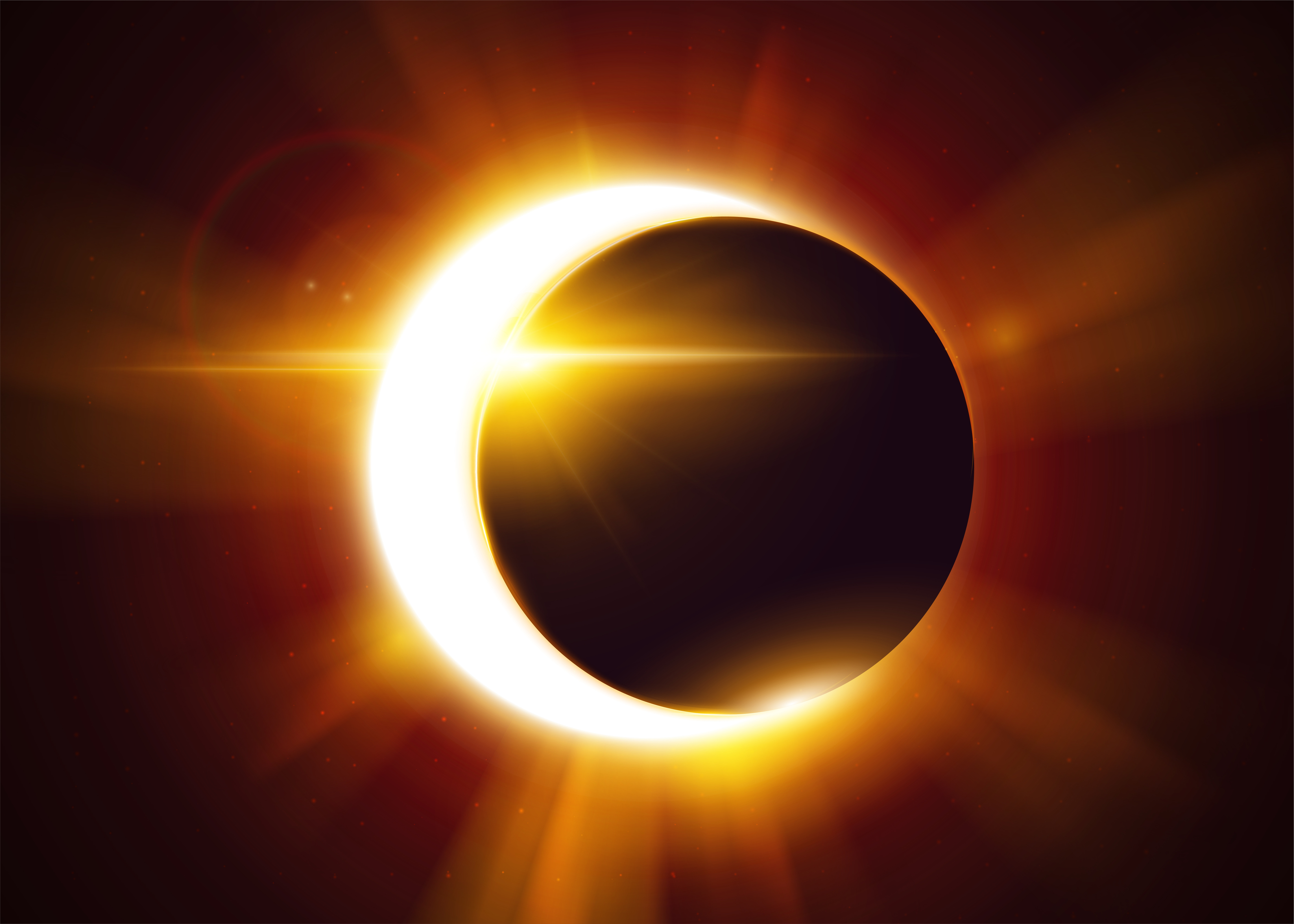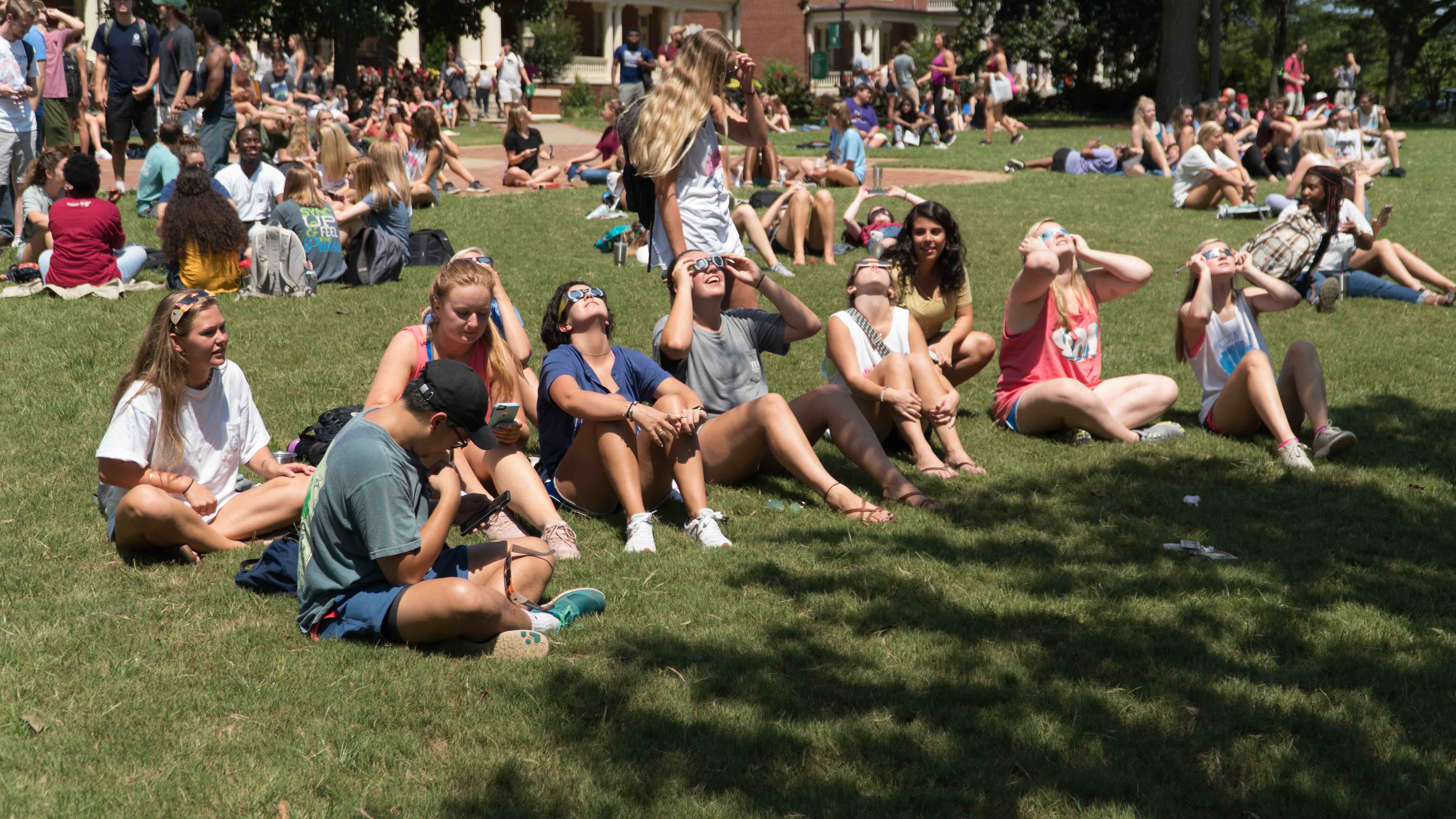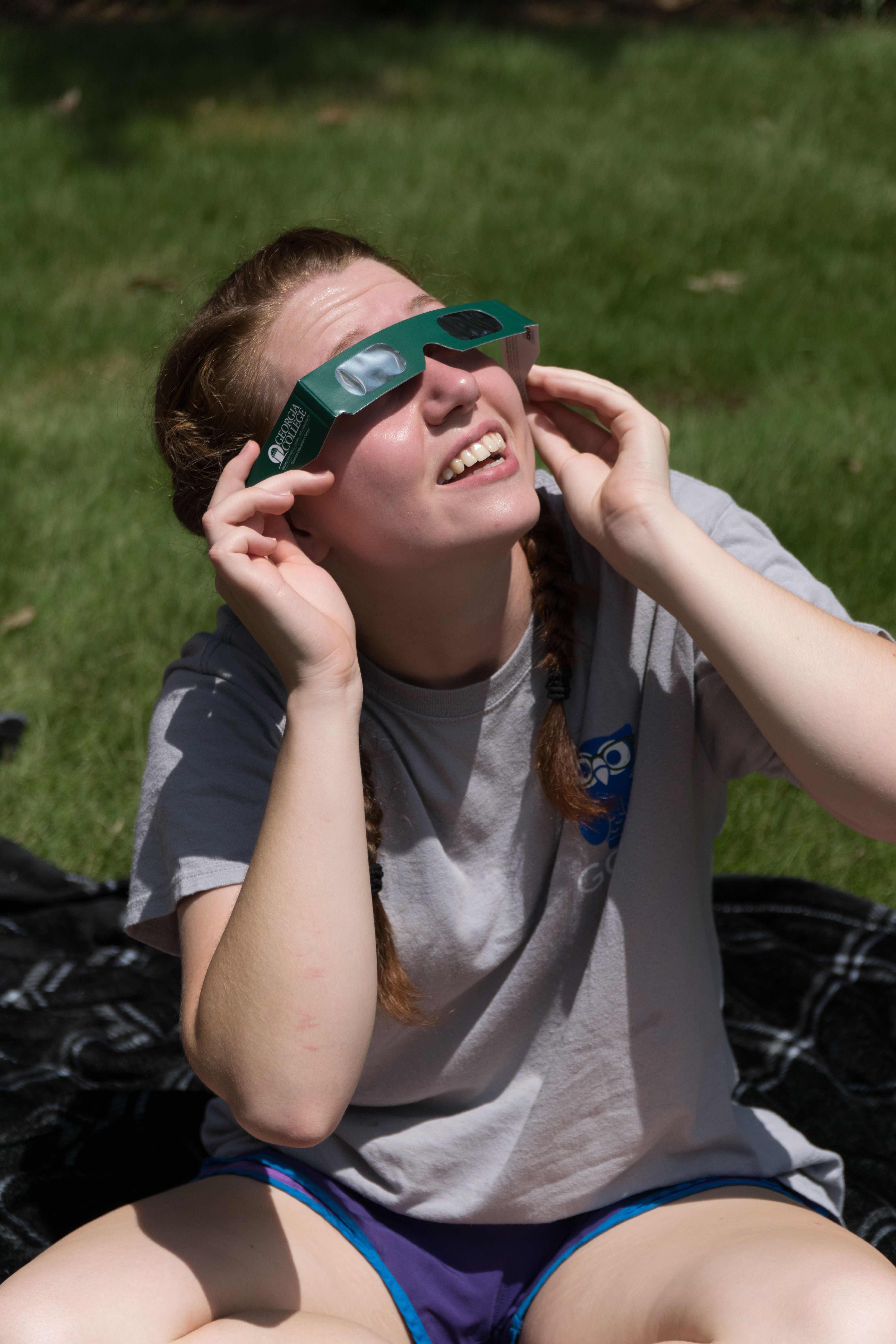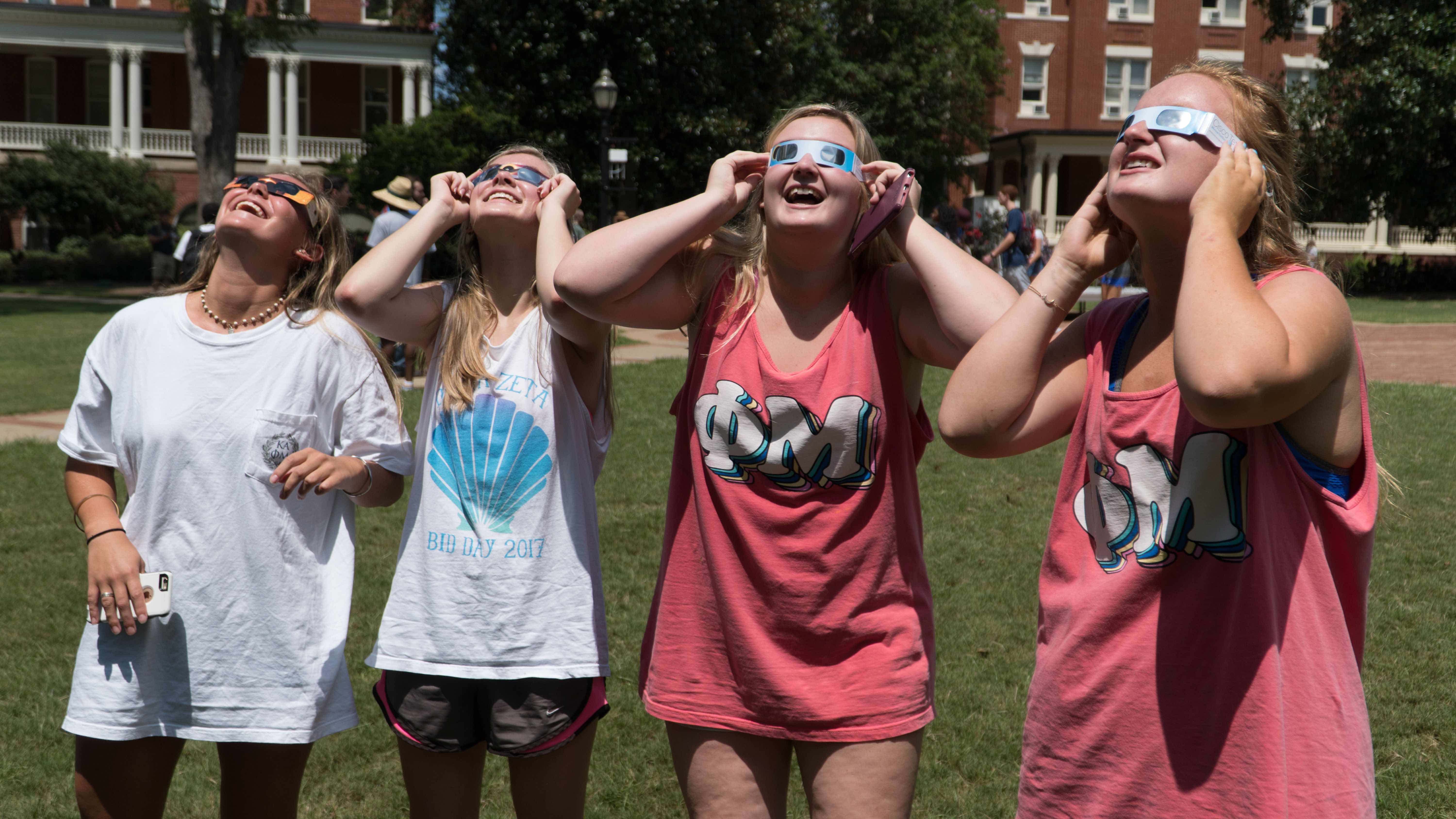The science and hubbub behind the coming eclipse
Some say the solar eclipse on April 8 is a lucky omen. Others say it’s a sign of God’s judgement.

No matter what you believe, this year’s darkening of the sun by the moon promises to be an astronomical display that’s bigger and longer, brighter and more spectacular than the last total solar eclipse that crossed America in 2017.
Georgia will not experience total blockage of the sun. But, weather permitting, residents will still see a remarkable occurrence, said Dr. Donovan Domingue, professor of physics and astronomy at Georgia College & State University.
It will be the last partial eclipse visible to Georgians until 2045.
On March 26, Domingue will give a 6 p.m. public talk at Mary Vinson Memorial Library in Milledgeville. He’ll explain the nature of solar eclipses, their history and details about April 8.
As he did in 2017, Domingue spent many months traveling to Baldwin and Jones County schools, prepping teachers on the science behind an eclipse. He helped create informational lessons and activities for the big day.

About 20,000 of those were handed out for April 8—funded by Georgia College’s Science Education Center, Department of Chemistry, Physics and Astronomy and the university’s Astronomy Kaolin Endowed Chair.
But safety’s not the only thing on people’s minds this year.
Today’s Internet is engulfed with “wild conspiracy theories” about the April 8 eclipse despite “perfectly reasonable scientific explanation” for the phenomenon, according to Newsweek.
The 2017 and 2024 eclipse pathways overlap to create a giant X across America—a sign of heavenly disapproval to some. But others will travel long distances to the X’s center point near Carbondale, Illinois, thinking it the luckiest place on Earth that day.
 Certain people fear the eclipse corridor passes too close to the New Madrid Seismic Zone. They point to a series of earthquakes in the Mississippi Valley that occurred just months after the September 1811 solar eclipse—though Newsweek found no scientific evidence to connect the two.
Certain people fear the eclipse corridor passes too close to the New Madrid Seismic Zone. They point to a series of earthquakes in the Mississippi Valley that occurred just months after the September 1811 solar eclipse—though Newsweek found no scientific evidence to connect the two.
The 2024 eclipse path caused more uneasiness when people realized it moves through Jonah, Texas, and at least two towns called Nineveh in Indiana and Ohio—calling to mind the Old Testament story of repentance.
More strange happenings surround the eclipse. Just days before, there’ll be an alignment of four planets. Then, a horned celestial object nicknamed the “Devil's Comet” becomes visible—yes, you guessed it—on April 8.
Superstitions and portents in the sky have plagued eclipses since ancient days. Even animals and birds act confused during eclipses.
But Domingue takes these things in stride.
No stranger to fun—the astronomer has Star Wars memorabilia and toys in his office—his reaction to conspiracy is one of a staunch scientist.
On the question of city names, Domingue said, “Each eclipse path is a part of a family of eclipses that all have the same path direction but land on different parts of the globe. When looking at a few centuries worth of eclipse paths—that creates a jumble of lines from the different families of eclipses. These families are called ‘Saros cycles,’ and they repeat every 18 years, 11 days and 8 hours.”

Two important things make this year’s solar eclipse brighter and more spectacular. The sun will be close to a solar maximum (2017 was close to a solar minimum), and the moon will be a couple thousand miles closer in orbit to Earth.
This means viewers may be treated to large eruptions of solar material as they watch the eclipse, while a closer moon appears bigger and blocks more sun.
Other fascinating facts:
• Solar eclipses happen almost every year somewhere on the planet, but total solar eclipses over specific communities are rare. A community might not experience one in 200 or more years.
• For a region like the U.S. to get two total solar eclipses in just seven years is “a truly remarkable occurrence.”
• In 2017, the eclipse moved northwest to southeast from Oregon to South Carolina. It was the first U.S. coast-to-coast total solar eclipse in 99 years.
• This year, the trek is southwest to northeast from Texas to Maine. (See this interactive map.)
• In 2017, a narrow corridor through 14 states of the U.S. experienced the total solar eclipse—but only the northeastern tip of Georgia did. This year, 13 states in America will experience the eclipse in totality.
• This year, maximum viewing times are nearly twice as long—4 minutes and 28 seconds in 2024 compared to 2 minutes and 40 seconds in 2017.
• The 2024 corridor is wider too—about 115 miles in 2024 compared to approximately 70 in 2017.
• Like last time, millions of Americans will see the 2024 eclipse. But this year’s eclipse will be seen by even larger populations as it moves through more densely populated areas.
 Mostly, April 8 is another chance in recent years to see an amazing, natural occurrence.
Mostly, April 8 is another chance in recent years to see an amazing, natural occurrence.
Domingue urges everyone to not to miss it. The next coast-to-coast total solar eclipse in the U.S. is more than two decades away on Aug. 12, 2045. It'll move from California, passing through Georgia, and into Florida.
After that, the good news is: A total solar eclipse will pass directly through Milledgeville and Macon. The bad news is: It's not until 2078, so most of us won't be around to see it.
***
On campus, a partial eclipse will be 2 hours and 34 minutes long, from 1:47 p.m. to 4:21 p.m. Maximum sun coverage by the new moon will occur at 3:05 p.m. At that time, roughly 20% of the sun will remain unobscured.
Weather is hard to predict, but a simulation at USA Today shows a 68% chance of clear skies in Milledgeville at peak viewing time, 3:05 to 3:40 p.m.
Safe eclipse glasses must be used at all times during a partial solar eclipse.
Free protective glasses are available in limited quantities to students through campus housing and faculty, students and staff at Ina Dillard Russell Library.
Milledgeville residents can get Georgia College eclipse glasses at Mary Vinson Memorial and Twin Lakes libraries.
Safety glasses will also be distributed from 2 to 4 p.m. April 8 at the Arts & Sciences Fountain. There will be solar “sunspotter” telescopes at A&S as well. They project images of the sun onto paper.

